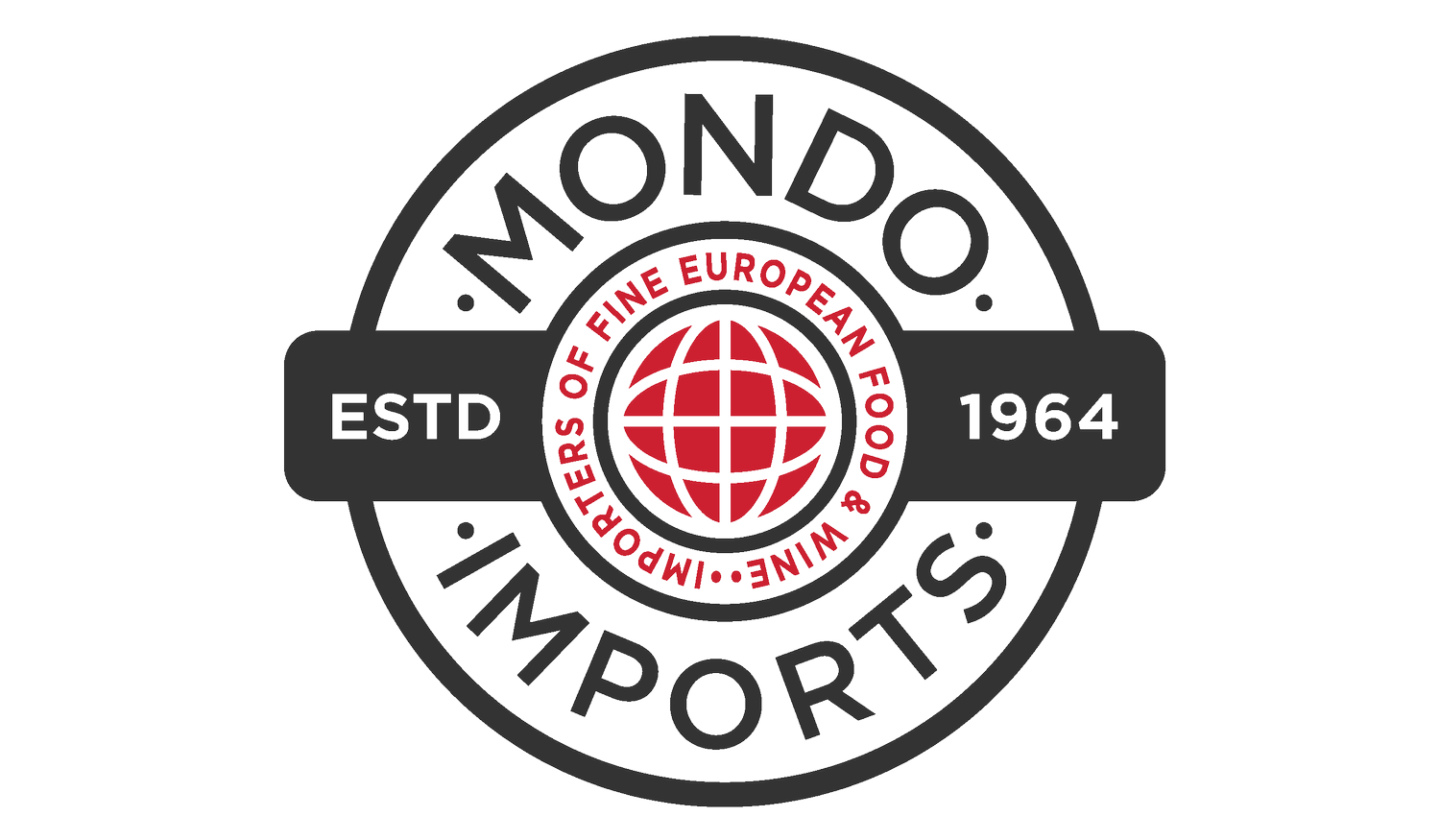OUR PRODUCERS
WE WORK EXCLUSIVELY WITH A SELECT GROUP OF LIKEMINDED WINE LOVERS. FROM ITALY, FRANCE AND THE UNITED STATES, OUR VISION IS TO CONTINUE THE HARD WORK THESE ARTISANS HAVE CREATED BY DEDICATING OUR ROLES TO PLACING THEM ON THE BEST WINE LISTS IN THE COUNTRY, AS WELL AS SELECTED INDEPENDENT RETAIL OUTLETS.
ITALY
-
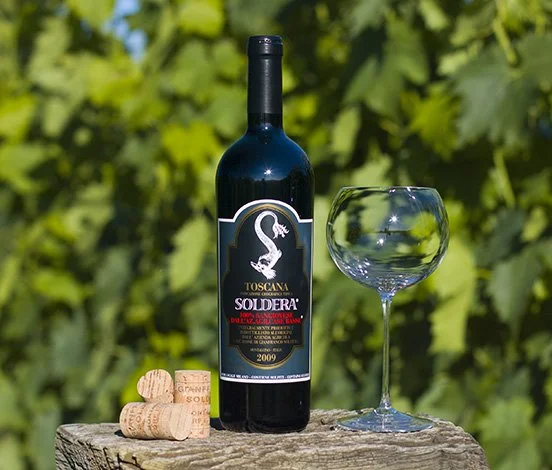
Gianfranco Soldera
Soldera® Case Basse stands as a benchmark of Sangiovese, shaped by an unwavering commitment to nature, terroir, and tradition. From meticulous vineyard care to minimal-intervention winemaking, every detail reflects the estate’s pursuit of purity and excellence. The wine is crafted with precision and patience. The result is a singular expression of Sangiovese—one of the most sought-after and collectible wines in the world.
-
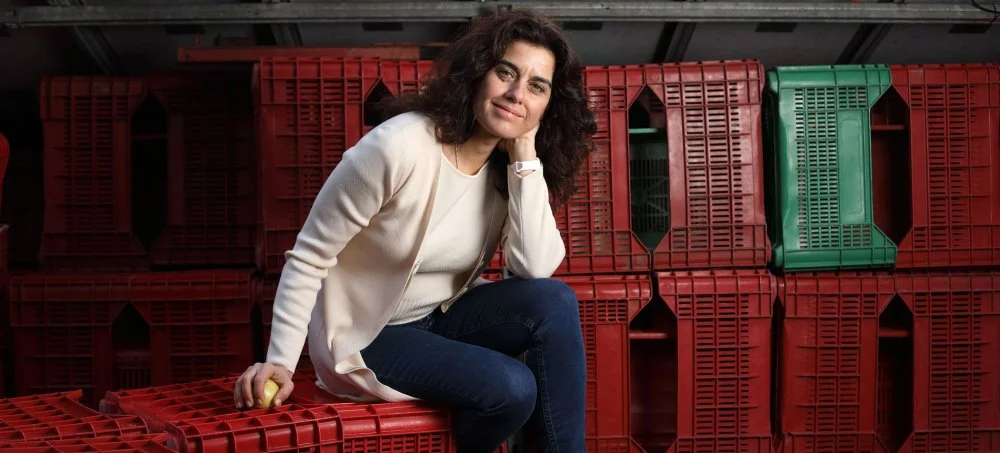
Stella di Campalto
Once abandoned after WWII, Stella di Campalto revived Podere San Giuseppe, creating a benchmark for biodynamic winemaking. Since 1992, she has farmed five and a half hectares with dedication and care. Nestled in the southeastern corner of Montalcino, her vineyards yield wines of remarkable purity and depth. Each bottle reflects a deep connection to nature, tradition, and terroir. The result is an elegant and soulful expression of Sangiovese—sought after by collectors and wine lovers alike.
-

Borgogno
Founded in 1761, Borgogno is Barolo’s oldest winery, pioneering exports and preserving a historic wine library. Half of its Barolo production is aged for 20 years before release, ensuring remarkable depth and complexity. Acquired by the Farinetti family in 2008, the estate embraced organic farming and a return to tradition. Every bottle reflects a commitment to purity, terroir, and time-honored craftsmanship. The result is a classic expression of Barolo—renowned for its structure, elegance, and aging potential.
-

Benevelli Piero
In 1978, Piero Benevelli founded his estate in Monforte d’Alba, focusing on Nebbiolo, Dolcetto, and Barbera. His son, Massimo, started young in the vineyards, learning that great wine begins with great grapes. Now a skilled grower, he crafts wines with depth, precision, and a distinctive touch. His Ravera cru Baroli balance the power of Serralunga d’Alba with the richness of Bussia, offering both structure and approachability. His Dolcetto and Langhe Nebbiolo are equally expressive, capturing the essence of Piedmont’s winemaking heritage.
-

Bricco Ernesto
Renato, together with his partner Elisa, they produce minuscule quantities—fewer than 4,000 bottles annually—of Arneis-based Bianco and Nebbiolo-based Rosso. Bricco Ernesto is the only address in Roero that has truly transcended the appellation, reputation-wise. Renato and Elisa meticulously farm their three-hectare estate, cultivating Arneis, Nebbiolo, Barbera, Sangiovese, and Bonarda varieties. Their organic practices have been certified since 1990, and they have recently incorporated biodynamic methods.
-

JG Benda
John Benda brings a fresh perspective to Montalcino, blending English roots with a passion for Italian wine. Alongside his Australian partner, Zoe Johnson, he cultivates two hectares of vineyards within a 16-hectare woodland estate. Situated at 520–550 meters near the Lume Spento pass, the vineyards thrive on distinct rock formations. The first, planted in 2006, features sandy, marl-rich soils from the Upper Cretaceous, lending elegance to the wines, while the second, dating back to the 1990s, sits on Paleocene-era limestone and Galestro, adding structure and complexity.
-
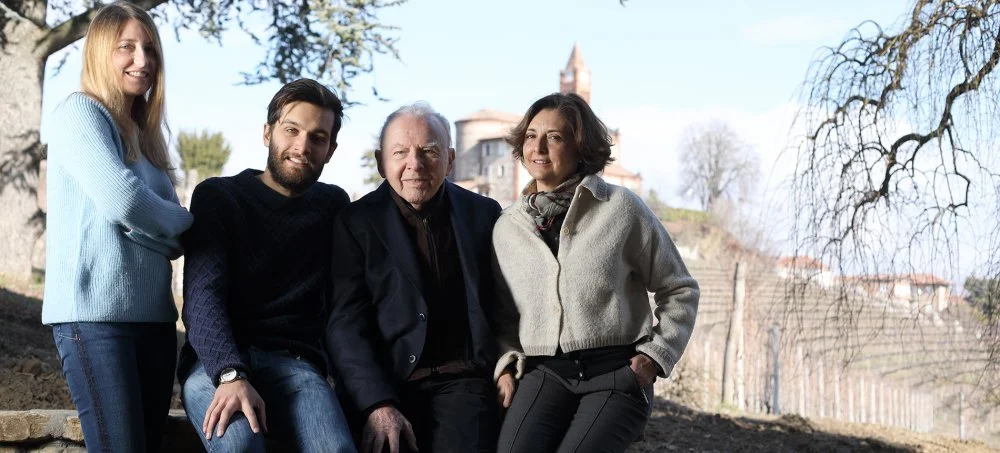
Oddero
Oddero is one of Barolo’s most historic producers, with over 200 years of winemaking tradition. Among the first to estate-bottle Barolo in the late 1800s, the family has built a quiet yet formidable reputation. Today, the seventh generation, Pietro and Isabella, oversee 35 hectares of vineyards, including legendary crus like Vigna Rionda and Monvigliero, all certified organic. Their wines follow a traditional approach with long macerations and aging in large neutral botti, including Austrian oak. Beyond their renowned single-cru Baroli, they produce exceptional Barbera and Langhe Nebbiolo, offering both quality and value. With an unparalleled collection of Grand Cru sites, Oddero remains a benchmark for classic Barolo.
-

Umberto Luigi Domenico
Umberto Luigi Domenico is a family-run winery at the heart of the Prosecco region, dedicated to producing wines that express the authenticity and character of their land. Their vineyards, situated in the rolling hills of Conegliano and Valdobbiadene, benefit from an ideal climate and mineral-rich soils, allowing them to create wines with elegance, freshness, and depth. In the cellar, they embrace both classic and innovative techniques, from traditional secondary fermentation in tank to experiments with bottle fermentation and extended lees aging. The result is a lineup of refined, expressive sparkling wines, each carrying the signature purity and finesse that defines Umberto Luigi Domenico.
-

Le Vigne di Alice
Le Vigne di Alice is a boutique winery in the heart of the Prosecco region, dedicated to crafting elegant, expressive sparkling wines. With a focus on sustainability and innovation, they produce Prosecco that captures the purity and vibrancy of Conegliano and Valdobbiadene. Their vineyards, nurtured with minimal intervention, benefit from ideal soils and climate, resulting in wines with finesse, freshness, and depth. In the cellar, they combine traditional methods with modern experimentation, including extended lees aging and bottle fermentation.
The result is a collection of refined, character-driven Prosecco.
-

Cascina Baricchi
Natale Simonetta and his wife, Francesca, run their boutique Barbaresco estate with a deep respect for tradition and quality. Originally from Lombardia, Natale’s journey into winemaking began after an accident led him to Barbaresco, where he learned from the legendary Bruno Giacosa. Since their first commercial release in 1996, the winery has produced only Barbaresco Riserva, with just 8,000–10,000 bottles per year. Their Rose delle Casasse is made from old-vine Nebbiolo Rose in Neive, while Quindicianni, a blend of Casasse and Roncaglie fruit, ages 15 years before release. Fermented with natural yeasts and aged in large neutral botti, their wines are known for elegance and complexity.
-

Castello Dei Rampolla
Castello dei Rampolla is one of Chianti Classico’s most revered estates, located in the famed Conca d’Oro of Panzano. Owned by the di Napoli family since 1739, the winery was a pioneer in introducing Cabernet Sauvignon to the region, with the groundbreaking release of Sammarco in 1980. Since 1994, they have embraced biodynamic farming, ensuring a deep connection between their vines and the land. Their wines, including the legendary Vigna d’Alceo, are known for their power, elegance, and ability to age gracefully. With a focus on low intervention and long aging in neutral oak, Castello dei Rampolla continues to set the standard for innovation and tradition in Chianti Classico.
-

Castello di Monsanto
Castello di Monsanto is a historic Chianti Classico estate, founded in 1962 by Fabrizio Bianchi in Barberino Val d’Elsa. Pioneering single-vineyard Chianti Classico with the release of Il Poggio in 1962, the winery helped shape the region’s modern identity. Today, Fabrizio’s daughter, Laura Bianchi, continues the family legacy, focusing on sustainability and precision in both vineyard and cellar. Their wines, crafted from Sangiovese and select international varieties, balance tradition with innovation. With meticulous aging in large oak barrels and a cellar holding vintages dating back to the 1960s, Castello di Monsanto remains a benchmark for Chianti Classico excellence.
-
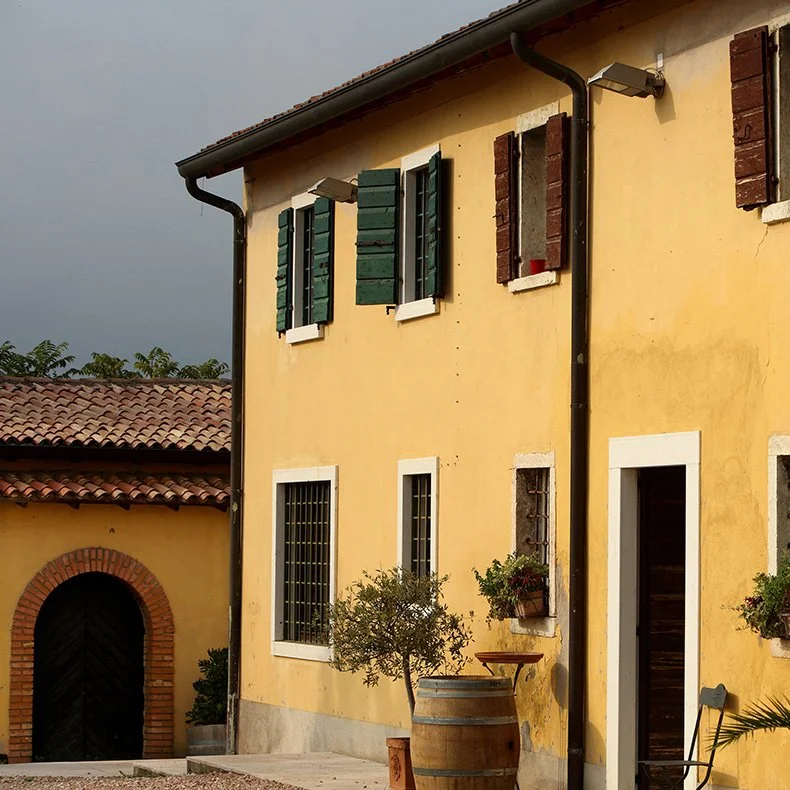
Corte Sant'Alda
Corte Sant’Alda is a benchmark producer in Valpolicella, where every step of winemaking is guided by a deep connection to nature and meticulous attention to detail. Each wine originates from carefully selected vineyards, chosen for their terroir, grape varieties, and vine age to ensure purity and character. Certified organic and Demeter biodynamic, the grapes are hand-harvested at peak ripeness, often requiring multiple passes through the vineyard. Fermentation is entirely spontaneous, relying on native yeasts in large oak vats, followed by careful aging in a variety of wooden casks. With minimal intervention and a philosophy rooted in respect for the land, Corte Sant’Alda crafts wines of elegance, authenticity, and unmistakable identity.
-

Emidio pepe
Emidio Pepe is a legendary producer crafting complex, age-worthy reds and whites in Montepulciano d’Abruzzo, a region known for mass production. The Pepe family has been making wine since the late 19th century, with Emidio Pepe solidifying its philosophy in 1964. Today, the fourth and fifth generations, led by Daniela, Sofia, Chiara, and Elisa, uphold its artisanal traditions. Vineyards in Teramo’s limestone-rich soils yield bold Montepulciano and textured Trebbiano, foot-trodden for complexity. Wines are biodynamically grown, hand-destemmed, spontaneously fermented, and aged in glass-lined cement. Montepulciano is bottle-aged for decades, then decanted before release, ensuring pure expression and extraordinary longevity.
-
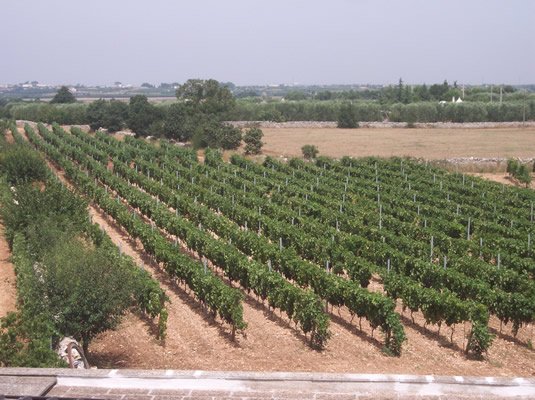
Fatalone
Fatalone is a historic, family-run winery in Gioia del Colle, where passion for Primitivo has been passed down for five generations. Founded in the late 19th century by Nicola Petrera, who built his home on Spinomarino hill, the estate was carefully developed to ensure optimal grape-growing conditions. In 1987, Fatalone became the first to bottle Primitivo DOC Gioia del Colle as a single varietal. The name originates from Filippo Petrera, nicknamed “Il Fatalone” for his charismatic charm. Today, the winery remains family-managed, producing organic, artisan wines with a deep respect for tradition, terroir, and sustainability while preserving the legacy of Primitivo.
-

GRAN SASSO
Gran Sasso, part of Gruppo Fantini, is a forward-thinking winery in Abruzzo, dedicated to showcasing the region’s indigenous grapes. Founded in 1994, the team revitalized a historic cooperative winery, implementing a “Quality Project” that incentivizes growers to prioritize vineyard health over quantity. Grapes undergo rigorous double sorting, ensuring exceptional quality. Named after Gran Sasso d’Italia, the towering Apennine peak, the winery benefits from a unique climate shaped by mountain and sea influences. Sustainable farming, precision viticulture, and modern techniques result in balanced, expressive wines. Gran Sasso’s success lies in its commitment to both tradition and innovation, producing outstanding wines at fair prices.
-

L'AIETTA
L’Aietta was founded in 2001 while I was still in high school, after discovering that the land where my family picnicked was officially registered for Brunello. I produced 720 bottles that year and have since expanded to nearly 1 hectare, crafting around 3,000 bottles. My vineyards, L’Aietta and Castelnuovo, are unique in Montalcino—L’Aietta features century-old terraces with sandy soils, while Castelnuovo’s south-east-facing hills produce elegant, aromatic Sangiovese. Though not originally certified, I’ve always farmed with deep respect for the land and began organic conversion in 2013. My small cellar relies on passion over technology, creating wines that truly express their terroir
-

lamoresca
Lamoresca, founded by Filippo Rizzo in 2000, is a small organic farm in Sicily, nestled at 430 meters above sea level in a Mediterranean landscape rich with wildlife. Originally a small plot, the estate now spans 25 hectares, cultivating vines, olive trees, and prickly pears. With a hands-on approach, every step of production—both in the winery and olive mill—is carefully managed. Using only healthy, organically grown fruit, Lamoresca produces wines and olive oil that express the unique character of the land and vintage. Traditional techniques, combined with modern expertise, ensure purity, authenticity, and an exceptional final product that truly reflects its Sicilian terroir.
-
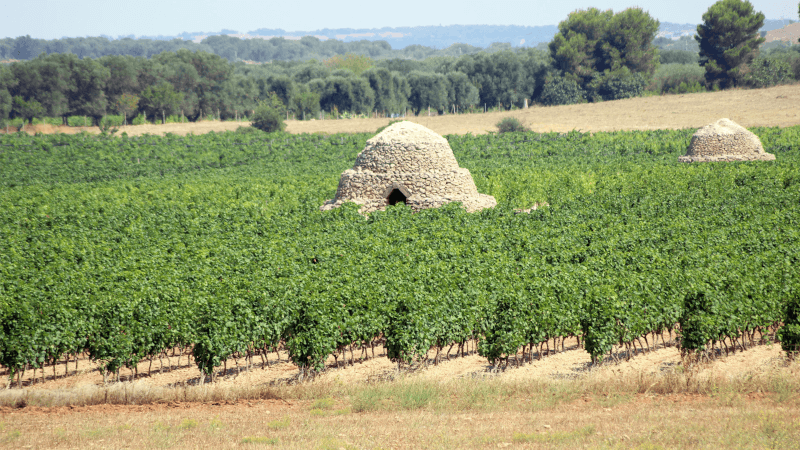
Luccarelli
Luccarelli wines are crafted at Terre di Sava, an ultra-modern facility near Manduria, the heart of Primitivo di Manduria. The winery sources grapes from hundreds of growers, many tending ancient vines averaging 80 years old in iron-rich Terrarossa soils. To preserve quality, Gruppo Fantini partners with farmers, paying for excellence rather than quantity, ensuring low yields and sustainable farming. Old vines thrive in Puglia’s arid climate, producing intensely flavored grapes. Harvest timing is crucial to maintain balance in this sun-drenched region. Led by winemaker Filippo Baccalaro, Luccarelli’s commitment to tradition and innovation results in expressive, terroir-driven wines of exceptional character.
-

Passopisciaro
Passopisciaro, founded by Andrea Franchetti, played a pivotal role in Etna’s rise to global acclaim. Alongside pioneers like Benanti and Tenuta delle Terre Nere, Franchetti transformed the region’s reputation, showcasing the raw power of the volcano through single-vineyard expressions. His wines are sultry, perfumed, and profoundly layered, capturing Etna’s unique terroir. With meticulous vineyard understanding and relentless innovation, Passopisciaro redefined what Etna wines could be. Franchetti’s vision put Mount Etna on the world stage, creating wines that are breathtaking, structured, and timeless. Today, Passopisciaro remains at the forefront of the denomination, producing some of the most sought-after Sicilian wines.
-
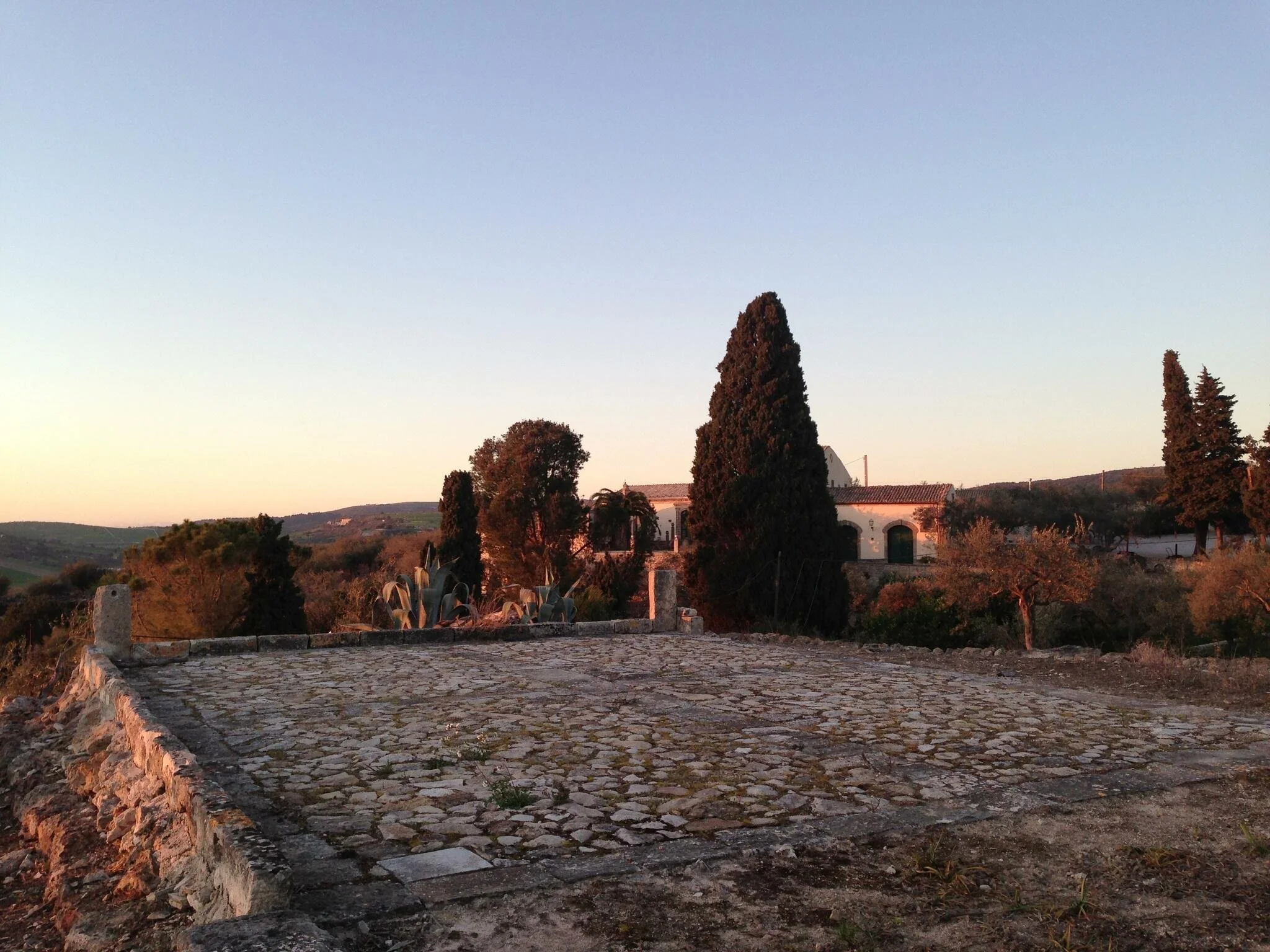
PianoGrillo
Pianogrillo is a historic organic winery and olive oil estate in southeastern Sicily, nestled in the rolling hills of Chiaramonte Gulfi. Owned by the Piccione di Pianogrillo family for centuries, the estate is now led by Lorenzo Piccione, who champions sustainable agriculture and native Sicilian grapes like Grillo, Nero d’Avola, and Frappato. Vines thrive in limestone-rich soils at 450 meters, benefiting from significant temperature variations that enhance aromatic complexity. Fermentation relies on indigenous yeasts, with aging in Slavonian oak and Etna chestnut tonneaux. Pianogrillo also produces exceptional extra virgin olive oil, embodying a deep respect for tradition, biodiversity, and the authentic flavors of Sicily.
-

Pipoli
Pipoli by Vigneti del Vulture is a standout expression of Aglianico del Vulture, crafted in Basilicata’s volcanic terroir. The winery, part of Gruppo Fantini, sources grapes from high-altitude vineyards on Mount Vulture’s mineral-rich slopes, producing wines of depth and complexity. Pipoli Aglianico del Vulture DOC offers rich dark fruit aromas, firm tannins, and balanced acidity, with notes of blackberry, plum, and spice. The volcanic soils impart distinct minerality, enhancing the wine’s structure and aging potential. Focused on sustainable viticulture and minimal intervention, Vigneti del Vulture creates elegant, terroir-driven wines that reflect the soul of southern Italy’s most prestigious red grape.
-

Salvatore Mollettieri
Salvatore Molettieri is the master of Montemarano’s Aglianico, crafting bold, long-lived Taurasi wines with unmistakable character. Deeply rooted in Irpinia’s winemaking tradition, he blends experience with innovation, creating wines that reflect the soul of the land. Vineyards on Montemarano’s high-altitude clay soils benefit from a continental climate, allowing for late harvesting and slow aging. The Cinque Querce cru stands out for its depth and elegance. Molettieri’s wines—whether young Aglianico or aged Taurasi DOCG—offer layers of dark fruit, balsamic notes, tobacco, and vibrant acidity. Each bottle embodies his passion and dedication, producing wines of remarkable structure, balance, and longevity.
-
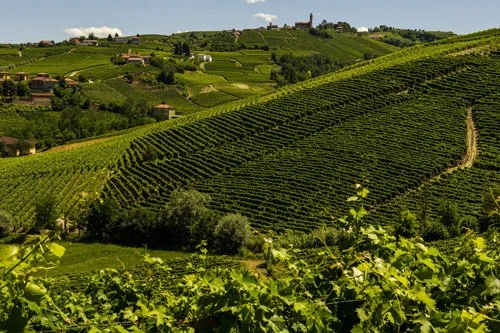
Saracco
Paolo Saracco is a benchmark producer of Moscato d’Asti, crafting wines that perfectly express the terroir of Castiglione Tinella. The estate’s vineyards, spread across 50 hectares, thrive in sandy, limestone-rich soils, enhancing the aromatic intensity of Moscato Bianco. Paolo Saracco emphasizes the importance of terroir, where the microclimate, altitude, and mineral-rich subsoil shape the wine’s signature freshness and fragrance. Sustainable viticulture ensures harmony with nature, preserving the vibrant flavors of the grapes. Every step in the winery is dedicated to maintaining Moscato’s delicate floral and fruit notes, resulting in a wine that is bright, expressive, and unmistakably true to its origins.
-

Tenuta di trinoro
Tenuta di Trinoro is the visionary estate of Andrea Franchetti, producing some of Italy’s most profound and age-worthy wines. Nestled in a remote corner of Tuscany’s Val d’Orcia, the estate is known for its meticulous vineyard management and low-yielding vines planted on limestone and clay soils. The harvest, dictated by nature, begins with Merlot, shaped by fluctuating temperatures and autumn rains, followed by Cabernet Franc, which ripens under shifting skies. Each parcel is vinified separately, preserving its unique expression. Now resting in barrels, these wines embody the power, elegance, and complexity that define Trinoro—deeply structured, terroir-driven, and among Tuscany’s most sought-after bottlings.
-

Vanita
Vanità, part of the Fantini Group, is dedicated to crafting organic wines that showcase the rich terroirs of southern Italy. With a focus on Nero d’Avola and Nerello Mascalese, the winery sources grapes from premium vineyards in Sicily, where limestone-rich soils and Mediterranean breezes enhance the wines’ balance and depth. Vanità Nero d’Avola Sicilia DOC offers bold red fruit, spice, and minerality, while the Nero d’Avola & Nerello Mascalese blend adds layers of oriental spice and elegance. Committed to organic farming and minimal intervention, Vanità produces expressive, terroir-driven wines that authentically capture the character of Sicily’s renowned indigenous varieties.
-

Paolovino
Paolovino is a distinguished producer crafting expressive wines from Italy’s renowned delle Venezie and Valpolicellaregions. Their Pinot Grigio delle Venezie highlights the crisp, mineral-driven character of northeastern Italy, offering delicate floral aromatics, bright citrus notes, and a refreshing finish—perfect for seafood, salads, and light cheeses. From Valpolicella, Paolovino produces vibrant Corvina-based reds, known for their balance of ripe cherry, spice, and elegant tannins. Whether a fresh, fruit-forward Valpolicella or a richer Ripasso-style wine, these expressions capture the depth and tradition of Veneto. With a focus on quality and terroir, Paolovino delivers wines that are food-friendly, authentic, and true to their Italian heritage.
-

Parri
Fattorie Parri is a family-run estate in Chianti Montespertoli, Tuscany, producing wines that honor the region’s deep winemaking heritage. Established in 1950, the estate spans 180 hectares, cultivating Sangiovese and other native varieties with a focus on quality and terroir expression. Their Chianti Montespertoli showcases vibrant red fruit, balanced acidity, and smooth tannins, embodying the elegance of Tuscan wines. Committed to sustainable viticulture and traditional techniques, Parri creates authentic, food-friendly wines that capture the essence of Chianti’s rolling hills. With a dedication to craftsmanship, the winery continues to deliver approachable yet structured wines that are a true reflection of Tuscany’s rich winemaking tradition.
FRANCE
-

R.H. Coutier
R. H. Coutier is a prestigious Champagne producer in Ambonnay, a renowned grand cru village in Montagne de Reims. The Coutier family has cultivated vines here since 1619, pioneering Chardonnay plantings in 1946. Their nine hectares of vineyards are sustainably managed, with a blend of 70% Pinot Noir and 30% Chardonnay. Producing only 2,000 cases annually, their Champagnes are hand-harvested, hand-riddled, and crafted with minimal intervention to highlight Ambonnay’s terroir. Signature cuvées include the Brut Tradition Grand Cru and Blanc de Blancs Grand Cru, offering a refined balance of richness and crisp freshness. Discover the elegance of R. H. Coutier Champagne.
-
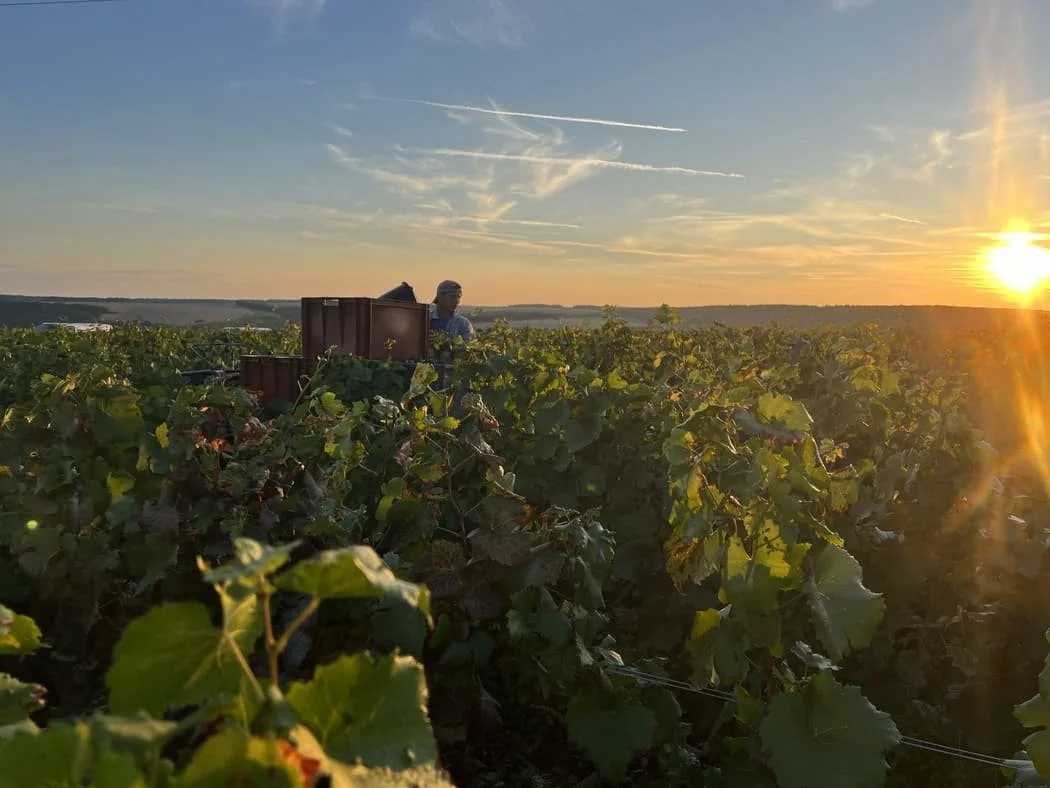
Serge Mathieu
Champagne Serge Mathieu is a family-owned estate in Avirey-Lingey, Aube, with a winemaking tradition dating back to the 18th century. Since 1958, the Mathieu family has crafted exceptional Champagnes, now led by Isabelle Mathieu and Michel Jacob. Their 11-hectare vineyard, planted with 80% Pinot Noir and 20% Chardonnay, follows sustainable viticulture, avoiding chemical herbicides and pesticides. Certified HVE and transitioning to organic certification, their wines reflect a deep respect for the land. Signature cuvées include the Brut Tradition and the 100% Pinot Noir Brut Rosé, known for its rich fruit expression and finesse. Experience the elegance of Serge Mathieu Champagne.
-

Domaine Gallois
On the Côte de Nuits, Dominique Gallois grows the vines of the family domain that exists in Gevrey-Chambertin since 1901. Here, between Dijon and Beaune and amongst the most prestigious crus of Burgundy, our wines flourish in the heart of the Climats de Bourgogne, classified in July 2015 in Unesco World Heritage.
The estate spans 4 hectares (10 acres) and is home to seven distinguished appellations, including the Grand Cru Charmes-Chambertin, Gevrey-Chambertin Premiers Crus (Combe aux Moines, Petits Cazetiers, and Les Goulots), as well as Gevrey-Chambertin, Bourgogne Pinot Noir, and Bourgogne Chardonnay.
USA
-
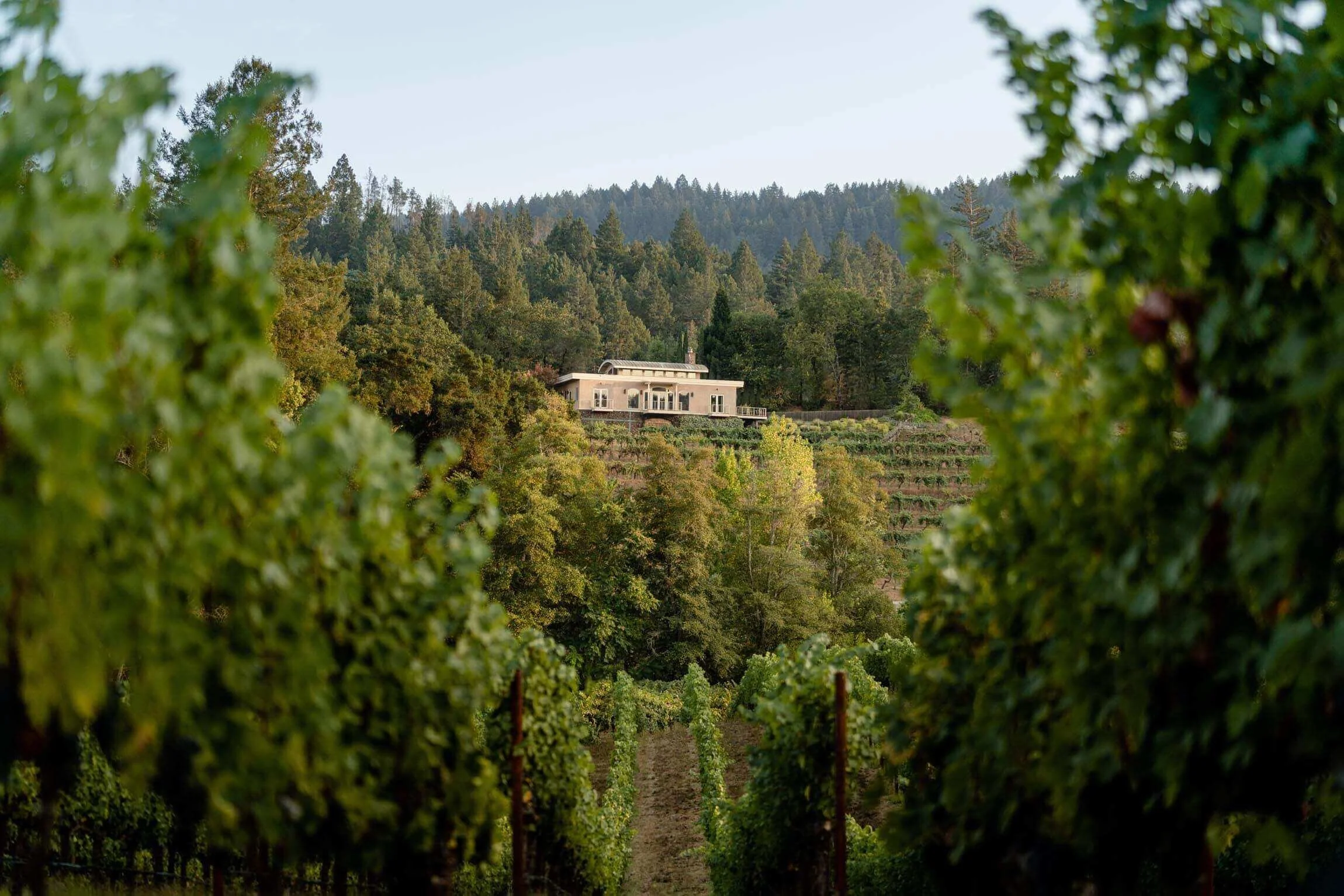
Diamond Creek Vineyards
Diamond Creek Vineyards has been a Napa Valley icon for over half a century, producing single-vineyard Cabernet Sauvignons from its unique Diamond Mountain estate. Founded in 1968 by Al and Boots Brounstein, the winery pioneered terroir-driven winemaking, recognizing the profound impact of soil and microclimate on wine character. The estate is divided into four distinct parcels—Volcanic Hill, Gravelly Meadow, Red Rock Terrace, and Lake—each yielding complex, long-lived wines of exceptional depth and structure. Committed to preserving tradition while striving for excellence, Diamond Creek continues to craft site-driven, estate-grown Cabernet Sauvignon, staying true to its legacy as a benchmark for Napa Valley terroir.
-

Gallica
Gallica is a boutique Napa Valley winery founded by winemaker Rosemary Cakebread, inspired by her experience in Napa and Bordeaux. Nestled among historic vineyards, coastal oaks, and olive groves, Gallica is committed to organic farming and minimal intervention winemaking. Rooted in gravelly Cortina soils, their estate produces Cabernet Sauvignon, Cabernet Franc, Petite Sirah, Grenache, Albariño, and Syrah—crafted to express each vineyard’s unique character. The winery’s name and symbol pay homage to the ancient rose, a nod to the elegance and aromatics of their wines. With a hands-on, artisanal approach, Gallica creates balanced, expressive wines that reflect both place and vintage.
-
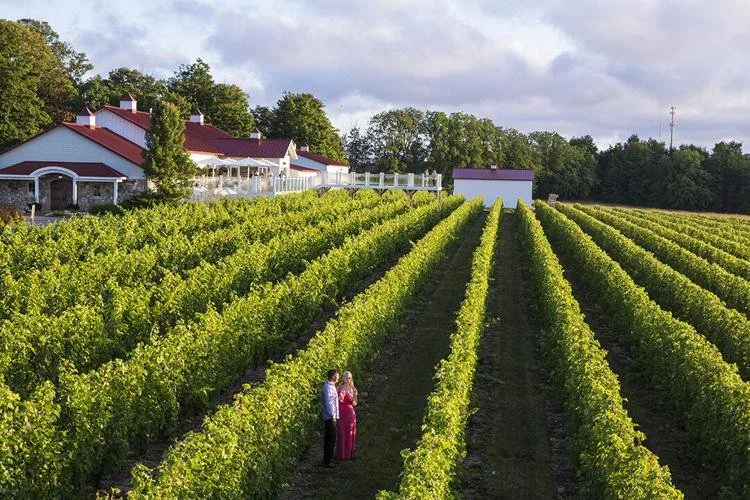
White Rock Vineyards
White Rock Vineyards is a historic estate in Napa Valley, originally planted in 1870 by Dr. Pettingill—an adventurous winemaker, brewer, and scientist. He built one of Napa’s first wineries, crafting wines aged in hand-carved stone cellars, a tradition White Rock continues today. In 1977, Henri and Claire purchased the estate, restoring its historic winery and vineyards. Known for its terroir-driven wines, White Rock produces elegant, structured expressions of Cabernet Sauvignon and Chardonnay, aged to perfection before release. With a commitment to heritage and craftsmanship, the estate remains a beacon of Napa Valley’s pioneering spirit, blending history with meticulous winemaking.
-

Mount Eden vineyards
Mount Eden Vineyards is a historic, family-owned estate in the Santa Cruz Mountains, perched at 2,000 feetoverlooking Silicon Valley. Founded in 1945, it is one of California’s original boutique wineries, specializing in estate-grown Chardonnay, Pinot Noir, and Cabernet Sauvignon. With the longest lineage of estate-bottled Chardonnay and Pinot Noir in the state, Mount Eden’s low-yielding vines, planted in rocky shale soils, have produced world-class wines for over half a century. In 2007, the estate expanded with Domaine Eden in the Saratoga foothills. Led by Jeffrey Patterson since 1981, Mount Eden focuses on organic viticulture, minimal intervention, and site-driven wines that reflect California’s rich winemaking heritage.
-
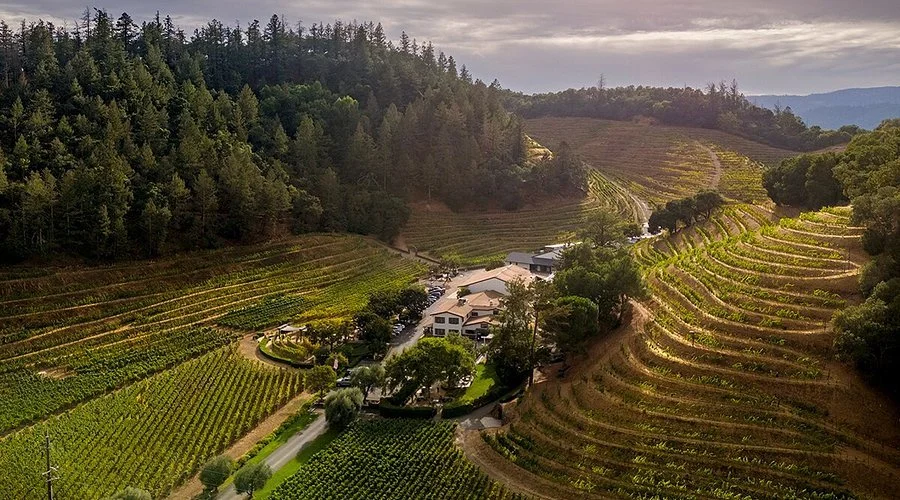
Pine Ridge Vineyards
Pine Ridge Vineyards, founded in 1978 by Gary Andrus, is a benchmark Cabernet Sauvignon producer in Napa Valley’s Stags Leap District—renowned for wines of both power and elegance. The estate spans five premier Napa Valley appellations: Stags Leap District, Howell Mountain, Oakville, Rutherford, and Carneros, each contributing unique characteristics to their wines. With a commitment to sustainable viticulture and meticulous winemaking, the team crafts wines that reflect their remarkable origins. Focused on balance, structure, and terroir expression, Pine Ridge produces complex, cellar-worthy wines that capture the essence of Napa Valley, staying true to its legacy of excellence and innovation.
-
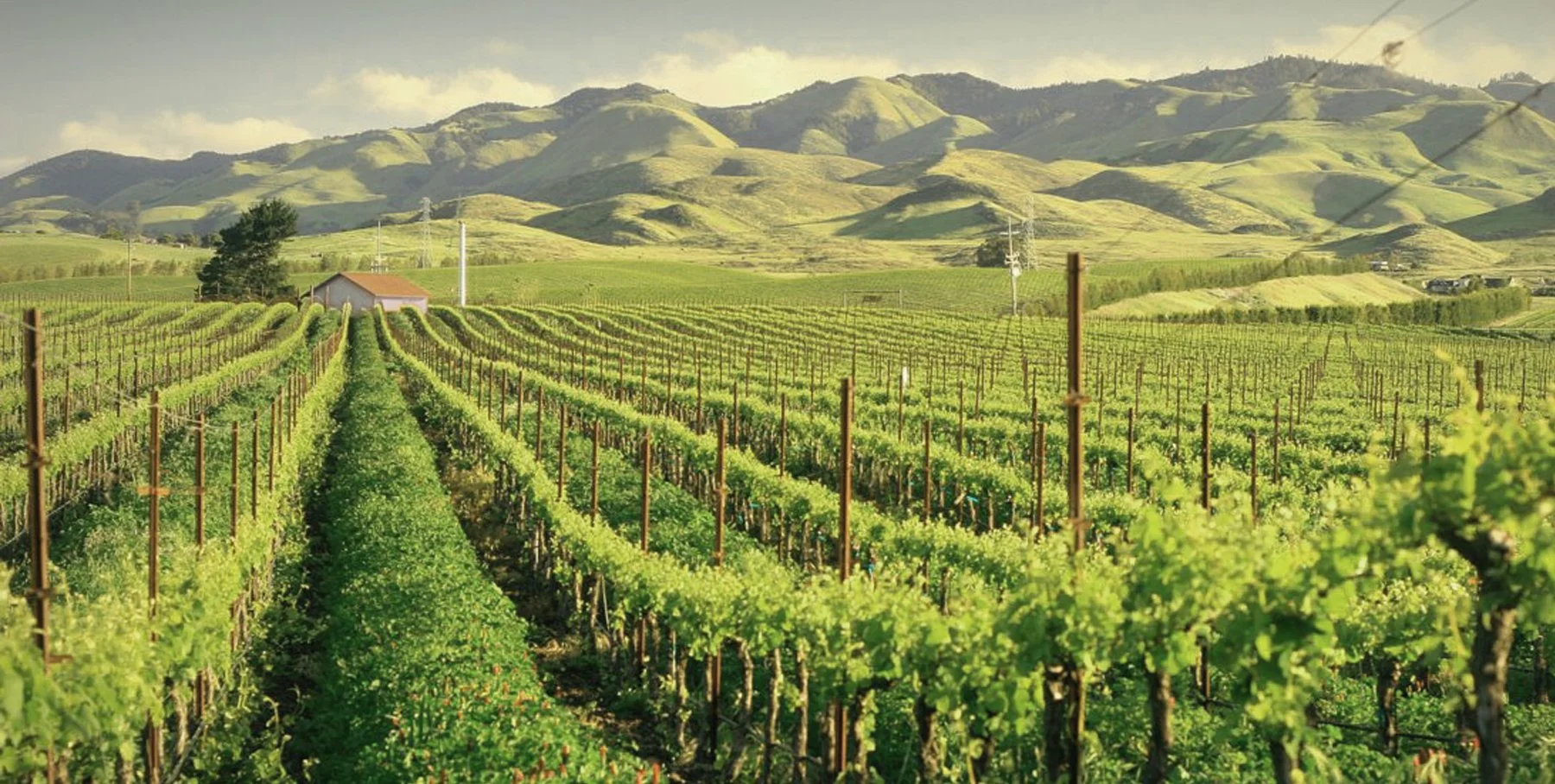
Chamisal vineyards
Chamisal Vineyards, established in 1973, was the first vineyard planted in what became the Edna Valley AVA on California’s Central Coast. Specializing in Chardonnay and Pinot Noir, the winery showcases the unique terroir of its 82-acre estate vineyard, planted across three distinct soil types. Just five miles from the Pacific Ocean, Chamisal benefits from a cool, maritime climate, allowing for a long growing season that enhances complexity, intensity, and a signature coastal freshness. Dedicated to sustainable farming and continuous innovation, Chamisal crafts wines that evolve with each vintage, balancing tradition with experimentation to express the fullest potential of their distinctive Central Coast terroir.
AUSTRALIA
-

Hoddles Creek Estate
Rick CoHoddles Creek Estate was founded in 1997 when the D'Anna family planted vineyards on land owned since 1960. Situated along Gembrook Road near Hoddles Creek, its steep slopes make mechanical harvesting impossible, requiring all vines to be hand pruned and picked. The estate exclusively produces single-vineyard, estate-grown wines in its 300-tonne winery, built for the 2003 vintage. Designed for efficiency, the split-level facility features a barrel store three meters underground. The vineyard includes 10ha of pinot noir (five clones), 6ha of chardonnay, 1ha each of sauvignon blanc, merlot, and cabernet sauvignon, plus 1.5ha of pinot gris.
-

Wickhams Rd
We manage an 8-hectare vineyard planted solely to Chardonnay and Pinot Noir, benefiting from a cool climate, free-draining soils, and 17-year-old vines. Trellised to Vertical Shoot Positioning (VSP) and always cane pruned, the vineyard is maintained sustainably, with sheep grazing during winter to reduce chemical weed control. In recent years, we have transitioned entirely to sourcing fruit from the Upper Yarra Valley, where cooler nights and fewer heat spikes create ideal growing conditions. This approach allows us to produce balanced wines with minimal intervention, requiring no acidification or fining while ensuring stability and longevity.
